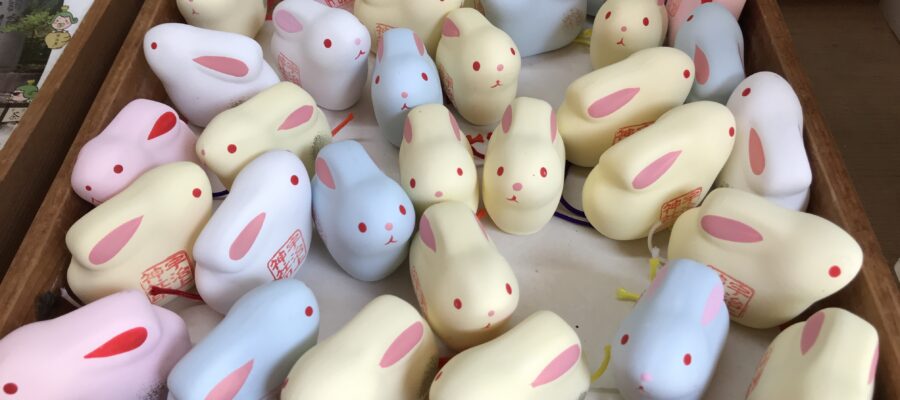京都の宇治に来ると、平等院鳳凰堂には必ず行きます。次に、宇治川を見にも行きます。鵜飼の飼育場を見たり、時には鵜匠が鵜を訓練するのを見学できるときもあります。ここで終わりかというと、そうではなく、時間がある際は、川の対岸に渡って、世界遺産であり、国宝の本殿を持つ宇治上神社まで、訪日客をご案内します。
ここにお祀りされているのは、菟道稚郎子命(うじのわきいらつこのみこと)で、応神天皇の皇子です。その昔、応神天皇に寵愛されていましたが、兄である、後の仁徳天皇に皇位を譲ったと伝えられています。
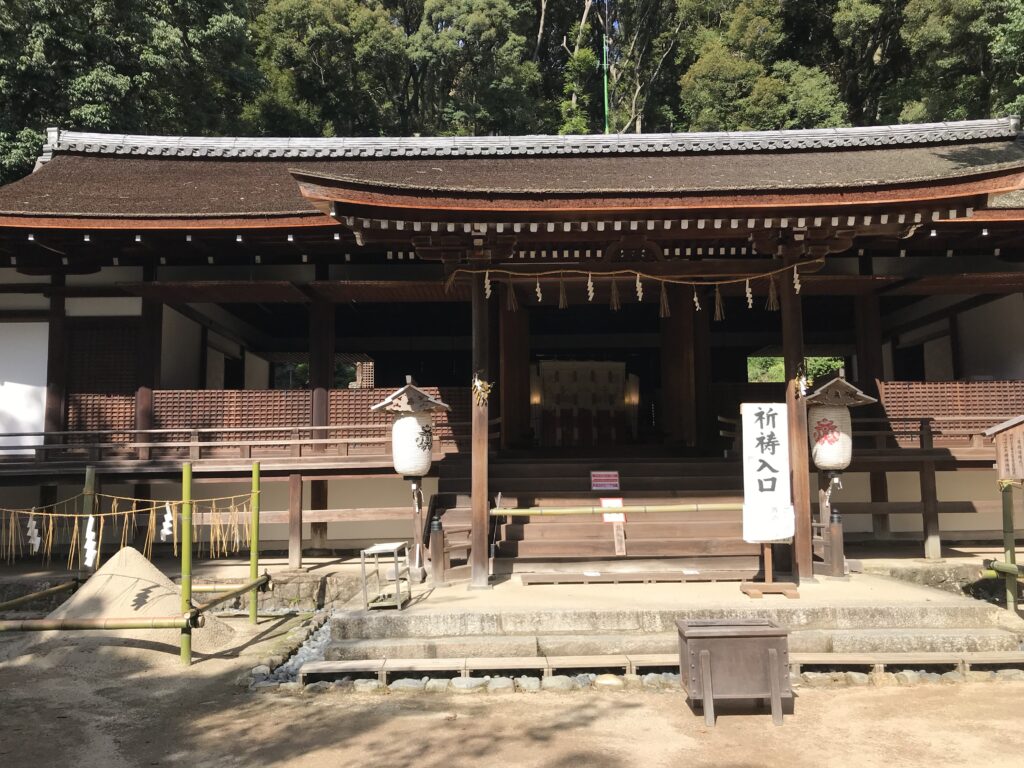
名前の頭に、「菟」の字があるからでしょうか、神社で売られているおみくじは、うさぎの形をしています。これがなんとも愛らしくて、色も数種類ありますので、行くたびに購入していました。今では自宅の食器棚にすべての色のうさぎのおみくじを揃えています。
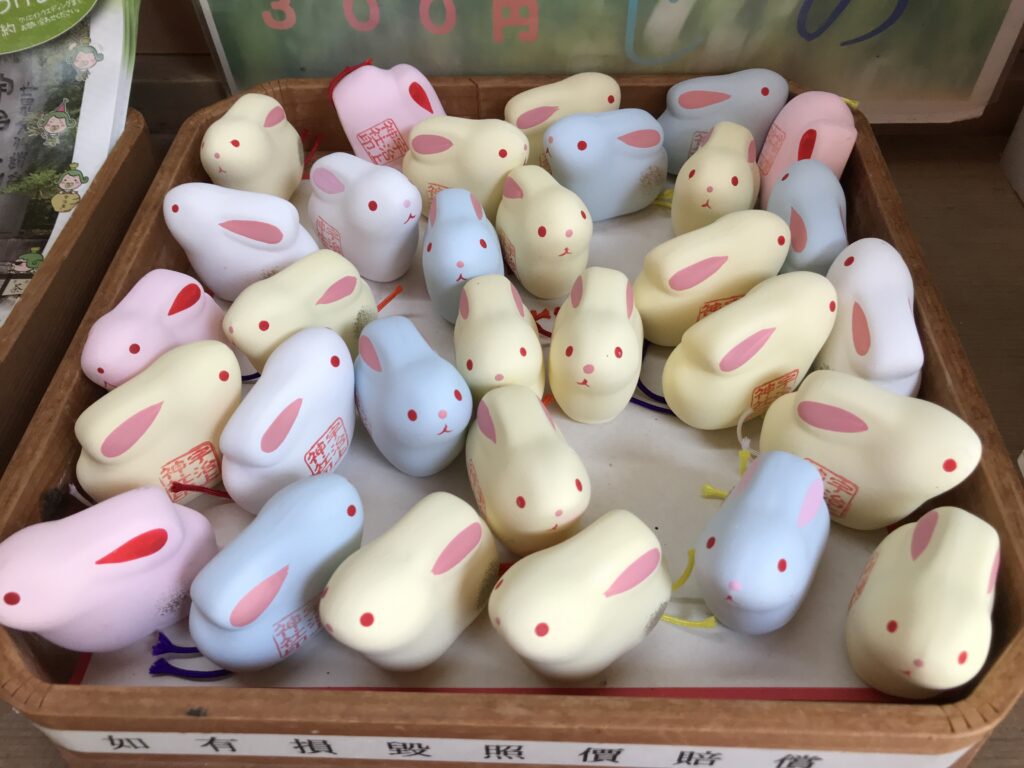
拝殿から裏に回ると、いよいよ国宝の本殿が見えます。本殿にお参りするのに何段か石段を上ると、格子戸の中に3つのお社が納められています。この国宝の本殿は平安時代後期に造られ、神社建築としては現存する最古のものとされています。
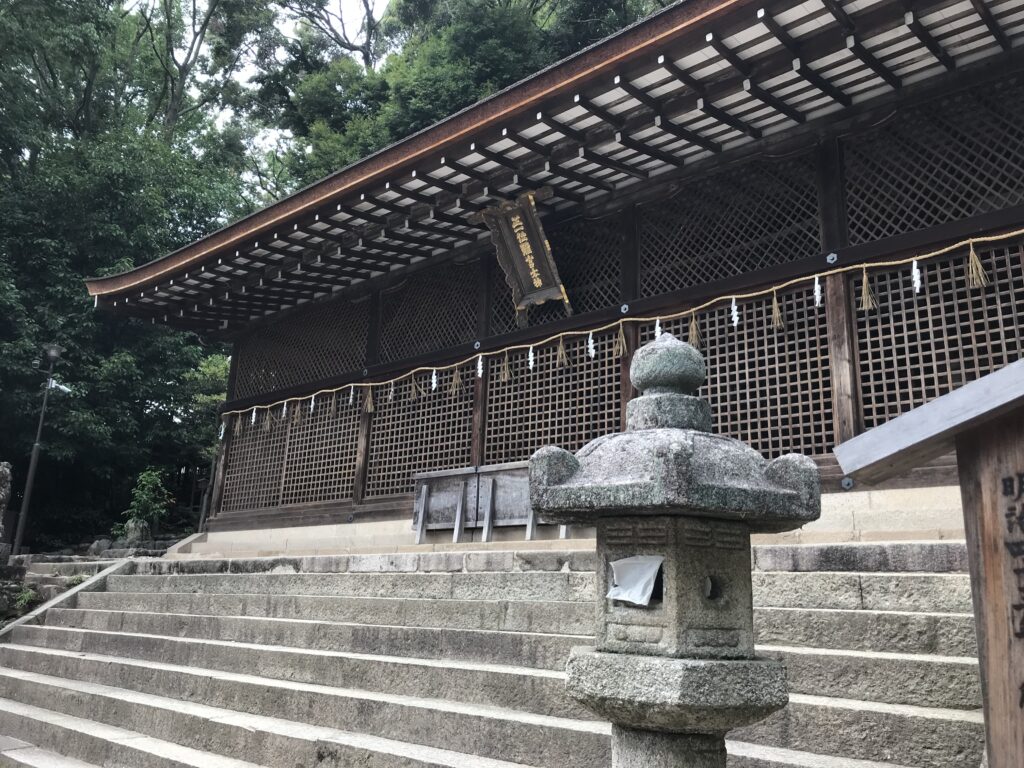
内部の3つのお社は、向かって右側が菟道稚郎子命、真ん中が応神天皇、向かって左側が仁徳天皇をお祀りしています。平等院鳳凰堂を見た後、こちらに訪日外国人をお連れしますが、古い神社であるのと、建物も色彩が落ちてしまっているので、彼らがどのような感想を持って見学しているのか、次回、ゆっくり聞いてみたいと思います。立ち止まって、写真を撮るような方は、あまりいないので、それほど興味をお持ちいただけてないのかも知れません。
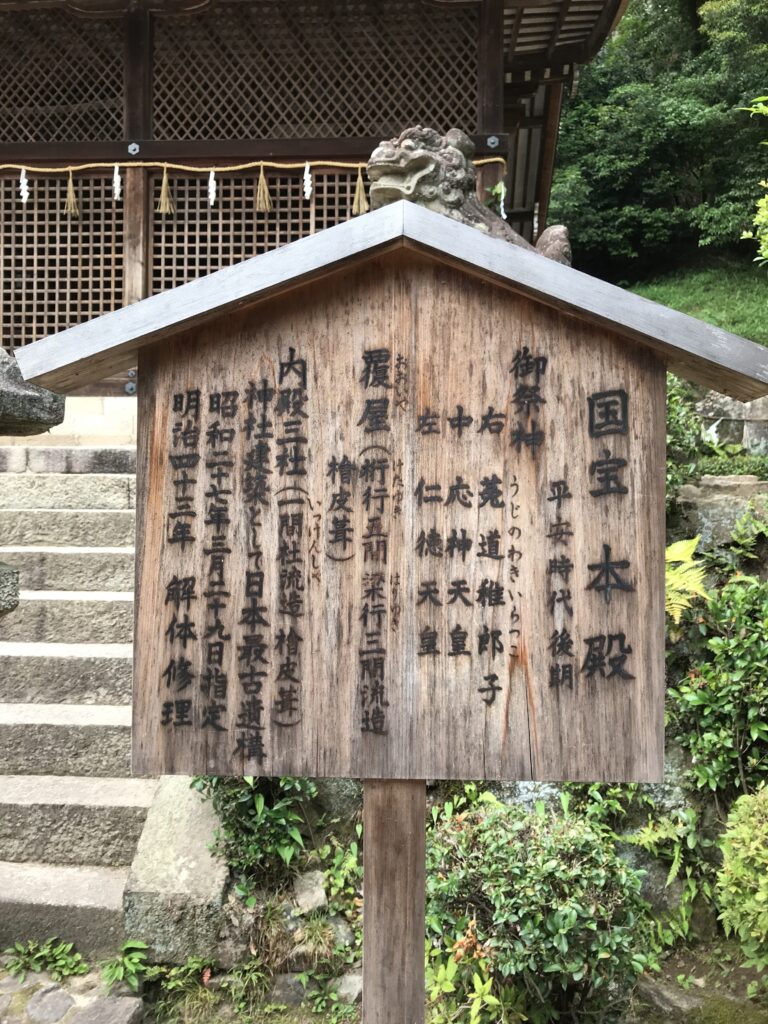
ただ、我々日本人は、ここに来るとホッとするような、穏やかな気持ちになれると思います。(完)
参考動画
宇治上神社の御朱印
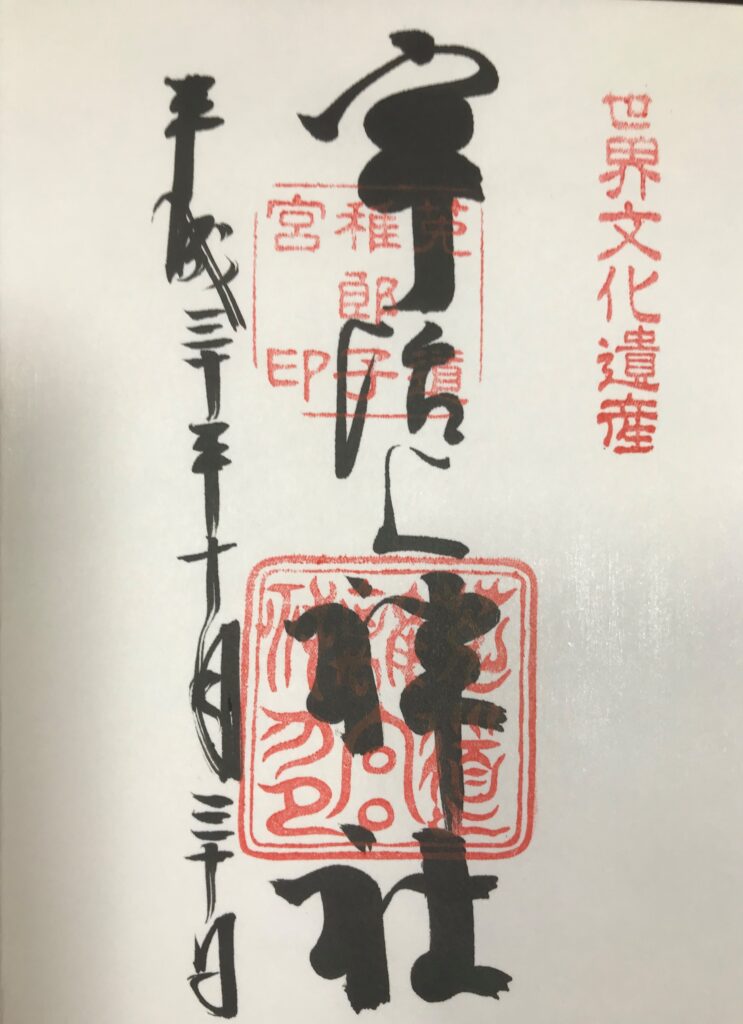
京都のお土産

価格:5,000円
(2021/11/27 17:37時点)
感想(34件)
Ujigami Shrine (Uji City, Kyoto Prefecture)
Whenever I come to Uji in Kyoto, I always go to Byodoin Phoenix Hall. Next, I also go to see the Uji River. Sometimes I can see the cormorant breeding grounds and sometimes I can watch the cormorant masters training the cormorants. If there is time, I will take visitors across the river to the Ujigami Shrine, which is a World Heritage Site and has a main shrine that is a national treasure.
The deity enshrined here is Uji no Wakiiratsuko no Mikoto, the prince of Emperor Ojin. It is said that he was once favored by Emperor Ojin, but gave up the throne to his elder brother, the future Emperor Nintoku.
Perhaps because of the character for “cony” at the beginning of his name, the fortunes sold at the shrine are in the shape of a rabbit. The omikuji sold at the shrine are in the shape of a rabbit, which is very adorable, and they come in several different colors, so I used to buy one every time I went there. I now have all the different colors of rabbit fortunes in my cupboard at home.
Going around the back from the praying shrine, you will finally see the main shrine, a national treasure. After going up some stone steps to visit the main shrine, you will see three shrines housed in a lattice door. The main shrine, a national treasure, was built in the late Heian period (794-1185) and is considered to be the oldest surviving shrine building.
The three shrines inside enshrine the deities: the one on the right, Uji no Wakiiratsuko no Mikoto; the one in the middle, Emperor Ojin; and the one on the left, Emperor Nintoku. After seeing the Byodoin Phoenix Hall, I would take foreigners visiting Japan to this shrine, but since it is an old shrine and the building has lost its color, I would like to ask them what they think of it next time. There were not many people who stopped to take pictures, so maybe they were not that interested.
However, I think that we Japanese can feel relieved and peaceful when I come here. (End)
Sanctuaire d’Ujigami (ville d’Uji, préfecture de Kyoto)
Chaque fois que je viens à Uji, à Kyoto, je vais toujours au hall du phénix de Byodoin. Ensuite, je vais aussi voir la rivière Uji. Parfois, je peux voir les sites de reproduction des cormorans et parfois, je peux observer les maîtres cormorans qui les entraînent. Si j’ai le temps, j’emmène les visiteurs de l’autre côté de la rivière au sanctuaire d’Ujigami, qui est un site du patrimoine mondial et dont le sanctuaire principal est un trésor national.
La divinité qui y est consacrée est Uji no Wakiiratsuko no Mikoto, le prince de l’empereur Ojin. On dit qu’il était autrefois favorisé par l’empereur Ojin, mais qu’il a cédé le trône à son frère aîné, le futur empereur Nintoku.
Peut-être à cause du caractère “cony” au début de son nom, les fortunes vendues au sanctuaire ont la forme d’un lapin. Les omikuji vendus au sanctuaire ont la forme d’un lapin, ce qui est très adorable, et ils existent en plusieurs couleurs différentes, si bien que j’en achetais un chaque fois que j’y allais. J’en achetais un à chaque fois que j’y allais. J’ai maintenant toutes les différentes couleurs de lapin dans mon armoire à la maison.
En passant par l’arrière du sanctuaire de prière, vous verrez enfin le sanctuaire principal, un trésor national. Après avoir monté quelques marches en pierre pour visiter le sanctuaire principal, vous verrez trois sanctuaires logés dans une porte en treillis. Le sanctuaire principal, un trésor national, a été construit à la fin de la période Heian (794-1185) et est considéré comme le plus ancien sanctuaire encore existant.
Les trois sanctuaires à l’intérieur abritent des divinités : celui de droite, Uji no Wakiiratsuko no Mikoto ; celui du milieu, l’empereur Ojin ; et celui de gauche, l’empereur Nintoku. Après avoir vu le hall du phénix de Byodoin, j’emmènerais les étrangers visitant le Japon dans ce sanctuaire, mais comme il s’agit d’un vieux sanctuaire et que le bâtiment a perdu sa couleur, j’aimerais leur demander ce qu’ils en pensent la prochaine fois. Il n’y avait pas beaucoup de gens qui s’arrêtaient pour prendre des photos, donc peut-être qu’ils n’étaient pas si intéressés.
Cependant, je pense que nous, Japonais, pouvons nous sentir soulagés et paisibles lorsque je viens ici. (Fin)
